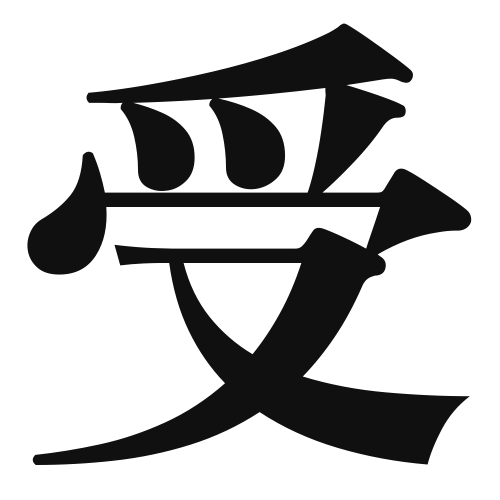1. Overview of Meaning
The kanji 受 (pronounced “u” or “ju”) primarily means “to receive” or “to accept.” It conveys the idea of taking in something, whether it be an object, information, or an experience.
2. Formation and Radical
Formation of the Kanji: The kanji 受 is a phonetic-ideographic character (形声文字). It combines the radical for “to hand over” (扌) on the left, which relates to actions involving hands, and the phonetic component “to accept” (受) on the right, which gives a clue to its pronunciation.
Radical: The radical for 受 is 扌, which is related to hand actions, emphasizing the physical aspect of receiving or accepting something.
3. Examples of Usage
Common Words and Phrases: Some frequently used words that include 受 are:
- 受け取る (uketoru) – to receive
- 受験 (juken) – entrance examination
- 受信 (jushin) – reception (of a signal)
Example Sentences in Daily Conversation:
- 私はプレゼントを受け取った。 (Watashi wa purezento o uketotta.) – I received a present.
- 彼は試験を受けることに決めた。 (Kare wa shiken o ukeru koto ni kimeta.) – He decided to take the exam.
4. Synonyms and Antonyms
Similar Kanji: A kanji with a similar meaning is 承 (shou), which means “to accept” or “to consent,” but it often carries a more formal or official connotation.
Opposite Kanji: An antonym of 受 is 拒 (kyo), which means “to refuse” or “to reject,” indicating the opposite action of receiving.
5. Cultural and Historical Background
Relation to Japanese Culture: The concept of 受 is significant in Japanese culture, where receiving gifts or favors is often accompanied by a sense of gratitude and obligation. This reflects the cultural importance of relationships and social harmony.
Proverbs and Idioms: One common saying is 受け入れる (ukeireru), meaning “to accept” or “to embrace,” which emphasizes the importance of acceptance in personal growth and relationships.
